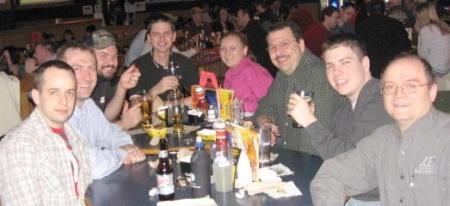How do you get welding excellence in new-product-launch in manufacturing? Skilled contributors working with great teamwork. But what does that mean, and how does it work? Everyone has heard “there is no “I” in TEAM”. Still, every team member is an Individual. The “I” that counts most is the “eye” that team members have for real teamwork. They need a good “eye” for how they view themselves, their team, and their roles.
The critical part of the “eye” in team leadership is what John Maxwell calls the single most important factor in high-performance teams: The Law of the Niche, third of the 17 Indisputable Laws of Teamwork. The Law of the Niche says that every player on a team has a place where they add the most value. Their niche position takes advantage of a blend of their greatest skills.
I love producing exceptionally profitable high-quality results in manufacturing, and am keenly aware that it takes a great team. Exceptional welding automation is NEVER produced by a jack-of-all-trades engineer, nor by a micro-manager who dictates everything, nor by a talented robotic programmer whose ego ignores the input of a degreed welding engineer. Exceptional welding automation is produced by individuals with respect for each other’s niche skills in tooling, controls, and welding expertise, who are focused on exceptional results.
This welding engineering team developed and conducted several waves of a fantastic 4-week training program for robotic welding techs, covering process theory, troubleshooting, manual welding skills, PM’s, procedures, “crash” recovery, programming and “ninja” robot optimization secrets. Results were world-class because every W.E. played niche roles in different training segments, or covered for others. (Left to right above: Nick Perry, Mike Walther, Bill Stevens, Nick & Mrs. Erchak, Gerald Dunnigan, Jared Wilson, Brian Dobben, plus Travis Sands and a couple of “top gun” robot integration programmers you don’t see)
Exceptional teams cultivate the “eyes” of the individual team members. Each member needs a realistic awareness of their niche skills, and a respect for the niche skills of their teammates. There’s room for pride and excellence in skills, because members know the excellent contributions of their unique skills are wanted and needed by the team. There is also freedom to learn from each other, to ask for help in weak areas, and to rely on others strengths.
A major team pitfall is not recognizing and valuing skills and weaknesses. Which expertise niches do team members bring, and not bring, to the team?
Drop pretense, and play to strengths. By consistently passing the ball to the person who is best able in that moment’s situation to move toward scoring, a team will consistently get high-performance results. By neglecting to help egotistical ball-hogs use the team’s skills, even teams with good athletes will consistently struggle and score low.
Just as you buy a drill to make holes, you buy welding automation to make welded products. It is crucial to realize that welding: is the core process; is typically the most complex process in the plant; only welds like an expert when it is taught by highly trained experts.
To excel, every essential portion of a welding automation project must faithfully serve both the physics of the core process, and the end-goal of profitable stability and quality in production. Elegant simplicity and robustly profitable quality are hallmarks of automation excellence. As leader of the core process, the Smart Welding Engineer is responsible to convey those process needs to the controls and tooling, and call the process shots as the welding quarterback.
And yet, every team-member is like the turtle on the fencepost, who didn’t get there on his own.
Brian Dobben



